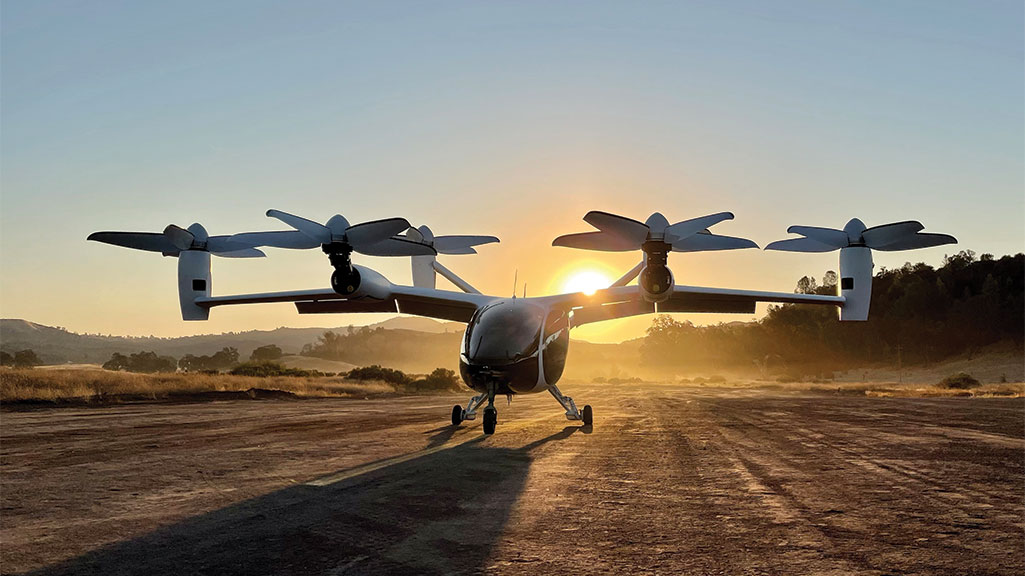Don’t Get Shocked: Be Prepared for the Electric Aircraft Revolution
A shift to airplanes powered by electric motors via lithium-ion batteries is in motion. Just recently, a major aircraft engine manufacturer announced the first flight of its all-electric aircraft.

Currently, the adoption of fully electric aircraft is limited by battery technology. A 737-size jet, for example, would require a battery the size of the aircraft itself. As such, the technology exists to power only smaller airplanes. Even so, almost half of all air tickets sold globally in 2018 were for flights under 500 miles. Thus, even incorporating electric aircraft only for shorter flights could have an enormous impact.
Based on the rate of technological improvements in batteries, large, fully electric aircraft might reasonably be assumed to become available by the 2030s. And as we have seen, technology often advances far more quickly than anticipated, so these estimates ultimately may prove conservative. Remember, the first computer took up 1,800 square feet, weighed 50 tons and could do little more than add and subtract numbers!
As this next generation of aircraft becomes more common, claims professionals and other personnel in the aviation industry will need to become familiar with the unique challenges presented by electric aircraft.
With Change Comes Challenge
Electric-powered aircraft present risks that differ from those presented by current airplanes. From an underwriting perspective, the lack of historical data means that the cost of insuring these types of aircraft initially will be higher, and then decrease over time. Additionally, from a legal and public relations perspective, it is likely that the first incidents involving electric aircraft will be blamed on the new technology, rather than other potential causes. The legal theories for liability in matters involving electric aircraft likely will not change significantly. Nevertheless, insurers should be on notice that plaintiffs’ attorneys inevitably will attribute initial incidents to design defects, relying on jurors’ likely mistrust of this new technology to garner outsized verdicts. Gaining public trust and rebutting these arguments before judges and juries will take time and effort.
It’s All About the Battery
The batteries that power the fully electric aircraft also present new challenges. Like electric cars, fully electric aircraft will use electric motors powered by lithium-ion batteries. These batteries have different maintenance requirements than current aircraft engines. For instance, lithium-ion batteries require charging, and their capacity for power diminishes over time. Thus, lithium-ion batteries will require more frequent replacement, and the depreciation of power will need to be monitored. One recent study found that the battery life of a fully electric aircraft could fall by as much as 25% in one year when operating four 55-mile flights daily. If this modeling proves accurate, airlines will have to account for the cost of monitoring and replacing batteries, and claims and underwriting professionals will have to look closely at the maintenance regime with a very different set of principles in mind.
A battery management system (BMS) is critical to the maintenance of lithium-ion batteries. A BMS helps prevent fires or damage to the batteries, and tracks battery usage. Pilots and maintenance personnel must make sure a BMS is functioning and accurately reporting battery data. Data retention and data storage policies for data generated by the BMS also will need to be created and implemented. Further, personnel will need to be properly trained on these policies and made aware of the potential legal implications of failing to properly store or maintain this data.
Additionally, charging schedules for the batteries must be maintained. Will fully electric airplanes be able to get back into the air as quickly as their predecessors or will battery charging time prevent that? Will the batteries require charging over night or after every flight? Electric-powered engines offer instant acceleration, so perhaps that may translate into multiple shorter runways allowing more aircraft to take off in a shorter time period. But that, too, will require careful thought as to how airfields are managed—acknowledging that for many years to come both conventional and electric aircraft will be expected to share the airspace.
Also, airport and local fire departments will need to be trained on extinguishing electrical and battery fires, which are not tackled in the same manner as a jet-fuel fire. Finally, just like we change our personal smartphones every two or three years, will electric aircraft also have a shorter lifespan? Hopefully, it’s not two or three years, but it will be interesting to see if they can compete with current airplane lifespans, which can be 40 or more years. The answers to these questions are not yet known and will be dictated by the capabilities of the batteries and other technological advancements.
The introduction of this new technology also means that new expert witnesses must be identified in anticipation of litigation. Experts in the areas of lithium-ion batteries, electric aircraft maintenance, and battery management software will be necessary to help resolve the complex claims scenarios that will inevitably emerge. Building industry trust with a deep bench of experts in these disciplines will become an immediate priority for those handling these types of claims.
Finally, attorneys and claims professionals will need to become familiar with the new technology. Having the right expert is important, but attorney and claims professional expertise is essential to the coordination of a strong defense.
Conclusion
The move toward electric airplanes will bring new challenges. It will require a shift in aviation operations, claims strategy and litigation handling. As with any new technology, electric airplanes present challenges bred by unfamiliarity. Nevertheless, companies can use familiar strategies to handle the new challenges and, of course, any short-term challenges presented by fully electric airplanes pale in comparison to the long-term benefits for both the planet and the aviation industry.
Ultimately, if history tells us anything, it is that we should never bet against technological advancement. The future of aviation is bright. Time will tell how quickly it becomes the present!
Photo: Joby Aviation Aircraft




